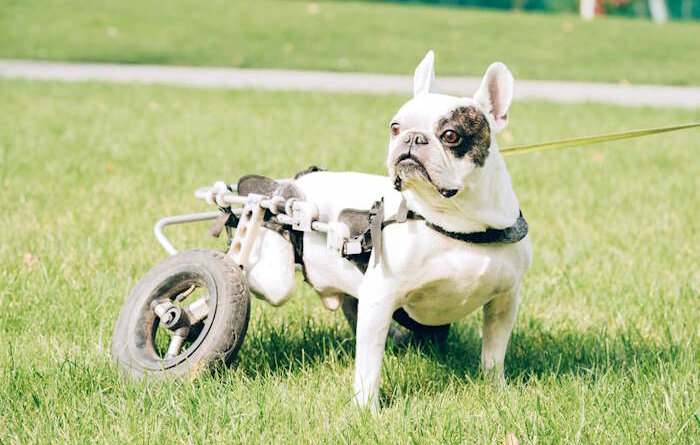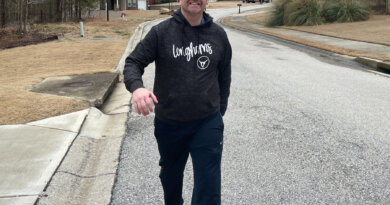Help Dogs with Amputated Legs: Ultimate Guide
Dogs with Amputated Legs. |Published 09-21-2023
When our furry friends face the challenge of limb amputation, they rely on us more than ever to provide unwavering support.
This article is your guide to helping dogs with amputated limbs regain their zest for life. We’ve shared a thoughtful approach that combines physical care, emotional companionship, and adaptive strategies.
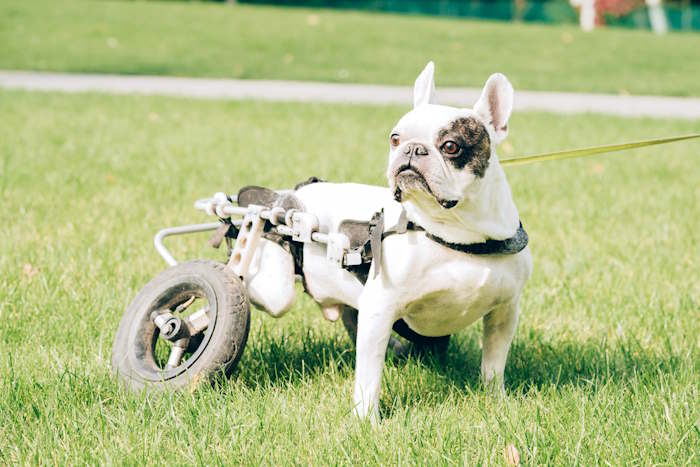 How to Help Dogs with Amputated Legs
How to Help Dogs with Amputated LegsPreparing for Your Dog’s Recovery
Let’s start this journey by teaming up with a trusted veterinarian. Their expertise will be your guide as you plan your dog’s recovery journey, ensuring a tailored roadmap for their rehabilitation.
At home, make sure your furry friend has a cozy and secure space, free from hazards. Soft and inviting bedding is a must to keep them comfortable.
And remember, it’s not just their physical comfort that matters – your emotional preparation is equally crucial.
Consult your veterinarian to ensure your pup is comfortable and pain-free during this period. Pay close attention to their wound care, keeping the incision site clean and dry to aid healing.
Regular checks for signs of infection are essential. As your dog adapts to their new physique, keep an eye on their mobility and gradually reintroduce them to movement.
Dogs with Amputated Legs:
Adapting with Assistive Devices
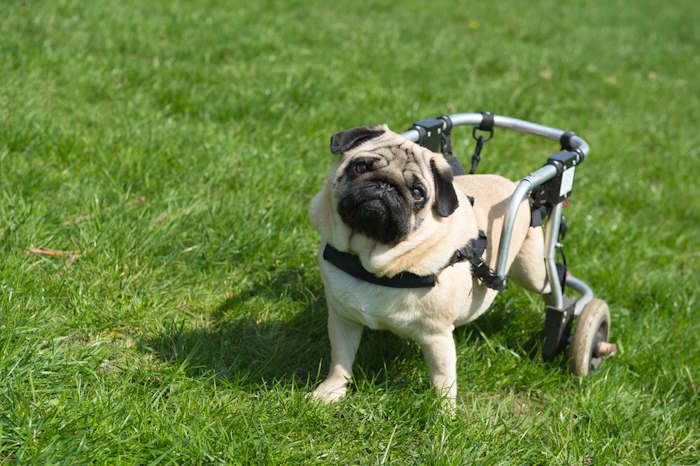
Losing a limb can be a daunting experience for dogs, affecting their mobility and confidence. However, advancements in veterinary medicine and technology have provided assistive devices that offer a lifeline to dogs with limb issues, helping them regain independence.
These devices, ranging from basic braces to advanced prosthetics, cater to a variety of needs.
Think of mobility aids as your dog’s new best friends. Wheelchairs and carts designed for dogs can give them the freedom of movement they deserve. Harnesses and slings provide extra support during walks.
Tailored Solutions: Prosthetics and Orthotics
Prosthetic limbs, custom-designed to fit a dog’s unique anatomy, replicate the natural function of a missing limb.
Utilizing lightweight materials such as carbon fiber, these prosthetics provide comfort and support, enabling amputee dogs to resume activities like running, playing, and even swimming.
On the other paw, orthotic devices, often referred to as braces, are employed to support and stabilize injured limbs, aiding dogs in the recovery process.
The Power of 3D Printing
3D printing and other innovative technologies have transformed the production of prosthetic limbs for dogs.
This approach offers affordable and tailored options, increasing the availability of assistive devices to pet owners. 3D-printed prosthetics can be tailored precisely to a dog’s unique body structure, ensuring a snug fit and optimal mobility.
Dogs with Amputated Legs: Rehabilitation and Adaptation
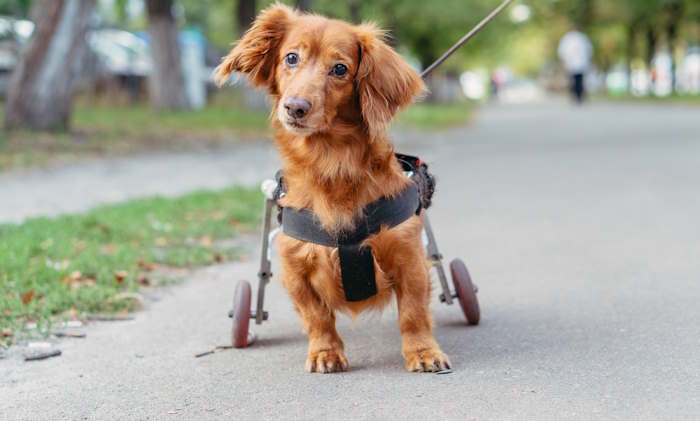
Assistive devices are not only about physical support; they also facilitate mental and emotional adaptation. As dogs adjust to their new reality, these devices serve as bridges, helping them regain their confidence and trust in their abilities.
Pet parents, in collaboration with veterinarians and rehabilitation specialists, play a pivotal role in guiding dogs through this process, fostering an environment of patience and encouragement.
Quality of Life and Beyond
The significance of assistive tools in enhancing a dog’s quality of life cannot be emphasized enough.
These devices empower dogs with amputations to partake in physical pursuits, reducing the chances of weight gain, muscle weakening, and associated health problems.
Furthermore, the emotional benefits are equally evident, as the bond between pet and owner deepens through shared experiences of overcoming challenges.
Note
While assistive devices are a boon, you must ensure their proper usage and maintenance.
Regular check-ups with veterinary professionals ensure that the devices fit comfortably and align correctly with the dog’s evolving needs.
Additionally, keep an eye out for any signs of discomfort, skin irritation, or fatigue for your dog’s overall well-being.
Getting Back on Their Paws: Rehabilitation and Exercise
Enlist the help of a professional canine physiotherapist to create a custom rehabilitation plan. It’s like a workout regimen tailored just for your pup.
From targeted exercises to gradually increasing intensity, this approach helps rebuild their strength and coordination. Low-impact activities such as hydrotherapy are gentle ways to build muscles without overexertion, all while boosting their positivity.
The Power of Targeted Exercise
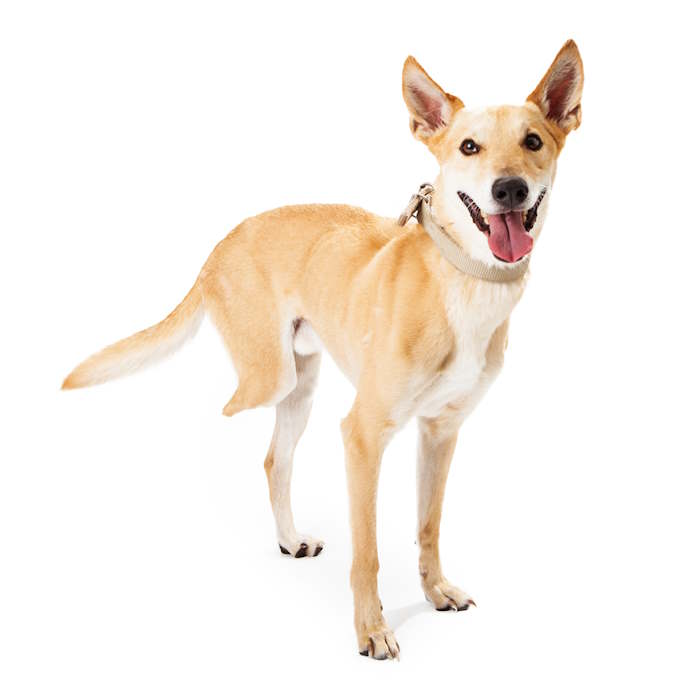
Amputated dogs require exercise routines that are carefully curated to suit their individual needs.
Low-impact activities such as controlled walks, gentle play sessions, and swimming can aid in maintaining cardiovascular health and muscle mass without putting undue strain on their remaining limbs.
Consistency is key, as gradual progress in exercise duration and intensity helps dogs build endurance over time.
Balance and Core Strengthening
Maintaining a strong core is paramount for amputee dogs, as it assists them in compensating for the loss of a limb.
Rehabilitation exercises that focus on balance and core strength, such as standing on unstable surfaces or performing controlled movements, aid in stabilizing the body and preventing potential strain on the remaining limbs.
Mental Stimulation and Enrichment
Recovery from limb amputation is not just physical; it’s also psychological. Engaging dogs in mentally stimulating activities like puzzle toys, scent games, and basic obedience training helps keep their minds sharp and spirits high.
These activities foster a positive outlook and contribute to a dog’s overall well-being.
Monitoring and Adjusting
Every dog’s journey through recovery is unique. Regular consultations with veterinary professionals ensure that rehabilitation and exercise plans are well-aligned with a dog’s progress.
Adjustments can be made to the routines based on the dog’s comfort level, ensuring that they continue to achieve milestones while avoiding unnecessary strain.
Creating an Accessible Environment for Dogs with Amputated Legs
Creating a welcoming and functional space for your canine companion with limb amputation involves thoughtful adjustments to ensure their comfort and mobility. Here’s a guide to help you achieve that:
Cushioned Surfaces
Opt for soft, supportive surfaces to cushion your dog’s remaining legs and body. Plush rugs or foam mats can provide comfort and traction, minimizing pressure on their joints.
Ramps and Slopes
Incorporate ramps or gently sloping pathways where there are stairs. This aids your dog in navigating elevation changes without putting undue stress on their remaining legs.
Low Furniture
If your dog enjoys lounging on furniture, consider using pet ramps or steps to make it easier for them to access couches or beds.
Slip-Resistant Flooring
Use non-slip flooring materials, like rubber or cork, to enhance stability and prevent slips. This is especially important in areas where your dog might be excited and moving quickly.
Wide Pathways
Ensure that pathways around your home are wide enough for your dog to maneuver comfortably, even with their amputated legs. This prevents obstacles from hindering their movement.
Elevated Food and Water Bowls
Elevate your dog’s food and water bowls to a comfortable height, reducing the need for them to bend down, which can be challenging for a dog with limited mobility.
Orthopedic Bedding
Provide orthopedic or memory foam bedding to support your dog’s joints while they rest. This helps alleviate any discomfort that might arise from their amputation.
Handrails or Grips
If there are areas where your dog might need assistance, consider installing handrails or grips that you can guide them with.
Anti-Chafe Protection
Consider using protective covers or bandages for amputation areas to prevent chafing and irritation. Consult your vet for guidance on the best options.
Initially, keep a watchful eye on your dog as they explore their modified environment. This allows you to identify any potential obstacles or challenges.
Be patient as your dog adjusts to their new circumstances. Adapt the environment further as you observe their preferences and challenges.
Lastly, use positive reinforcement and treats when your dog successfully navigates their environment. This encourages them to adapt and explore with confidence.
Emotional Well-being and Nourishment for Dogs with Amputated Legs
Remember, your dog’s emotional health matters too. Providing companionship and positive interactions are like medicine for their spirits.
If they’re feeling anxious or fearful, take things slow and steady, building their confidence over time.
Participating in social endeavors like park outings and training sessions can significantly contribute to restoring their sense of normalcy. Also, maintain a well-balanced diet for your dog to support a healthy weight and overall well-being.
Balanced Nutrition
Dogs with limb loss may experience changes in weight distribution and muscle utilization, affecting their overall metabolism. Work with a veterinary nutritionist to create a personalized diet for your dog, factoring in breed, size, age, and existing health conditions.
Mindful Portion Control
Portion control is a key aspect of managing weight, and measuring meals accurately can aid in preventing obesity or undernourishment. Collaborate with your veterinarian to determine the appropriate portion sizes based on your dog’s individual needs.
Incorporating Joint-Support Supplements
Given the altered weight distribution and increased stress on remaining limbs, joint health becomes a significant concern for dogs with amputated legs.
So, include joint-support supplements, such as glucosamine and chondroitin, to help promote healthy joint function in your dog and alleviate potential discomfort.
Hydration
Adequate hydration is vital for dogs of all shapes and sizes, but it’s particularly crucial for those with amputated limbs. Water aids in digestion, temperature regulation, and circulation. So, encourage your dog to drink fresh, clean water throughout the day.
Psychological Nourishment
The loss of a limb can lead to feelings of anxiety, stress, or depression. To provide psychological nourishment, engage your furry friend in interactive play, mental stimulation, and affectionate bonding. A happy and engaged mind contributes to their overall vitality.
Regular Vet Check-ups and Path to Success
Regular vet visits are like checkpoints in their recovery journey. These appointments help track their progress and address any emerging concerns.
Adjust your care routine as needed – it’s all about adapting to their evolving needs and catching issues early on.
Additionally, strongly consider investing in pet insurance if you haven’t already. Doing so will ensure that all your pet’s basic healthcare needs such as routine checkups, treatments, and even potential accidents are covered. Plus, if you buy online, it’s quite affordable.
The tenacity dogs show in adapting to life with amputated limbs is nothing short of amazing. Celebrate every small victory and share success stories to inspire others walking the same path. Communities of fellow dog owners offer priceless empathy, understanding, and knowledge sharing.
In Conclusion
Supporting a dog with an amputated limb is a journey marked
by compassion, dedication, and the renewal of joy.
By embracing a holistic
approach that encompasses physical rehabilitation, emotional bonding, and
adaptable techniques, you’re helping your furry friend overcome obstacles and
embrace life’s new chapter.
With patience, love, and a touch of resilience,
you’ll witness the incredible strength of dogs as they bravely navigate this
transformative journey.
Does This Article Deserve Your Thumbs Up?
We always appreciate your support and encouragement. Your thumbs up means so much to us. Please like this article.
If you find this page or any page on Small Dog Place Helpful, or useful in anyway, I’d love it if you would click the small heart found on the bottom right of each page.
You can also share or bookmark this page — just click on the:

Free Monthly Newsletter
Sign Up for Our Free Newsletter and get our Free Gift to You.
my E-book, The Top 10 Mistakes People Make When Choosing a Dog (and how to avoid them)

